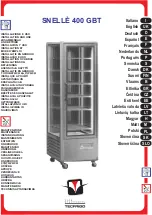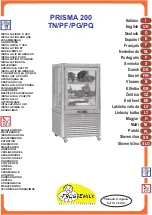
SERVICING PRECAUTIONS
- 5 -
CAUTION: Before servicing receivers covered by this
service manual and its supplements and addenda, read
and follow the SAFETY PRECAUTIONS on page 3 of this
publication.
NOTE: If unforeseen circumstances create conflict
between the following servicing precautions and any of the
safety precautions on page 3 of this publication, always
follow the safety precautions. Remember: Safety First.
General Servicing Precautions
1. Always unplug the receiver AC power cord from the AC
power source before;
a. Removing or reinstalling any component, circuit
board module or any other receiver assembly.
b. Disconnecting or reconnecting any receiver electrical
plug or other electrical connection.
c. Connecting a test substitute in parallel with an
d. Discharging the picture tube anode.
2. Test high voltage only by measuring it with an
3. Discharge the picture tube anode only by (a) first
4. Do not spray chemicals on or near this receiver or any
5. Unless specified otherwise in this service manual,
6. Do not defeat any plug/socket B+ voltage interlocks
with which receivers covered by this service manual
might be equipped.
7. Do not apply AC power to this instrument and/or any of
its electrical assemblies unless all solid-state device
heat sinks are correctly installed.
8. Always connect the test receiver ground lead to the
receiver chassis ground before connecting the test
receiver positive lead.
Always remove the test receiver ground lead last.
9. Use with this receiver only the test fixtures specified in
this service manual.
CAUTION: Do not connect the test fixture ground strap
to any heat sink in this receiver.
Electrostatically Sensitive (ES) Devices
Some semiconductor (solid-state) devices can be
damaged easily by static electricity. Such components
commonly are called Electrostatically Sensitive (ES)
Devices. Examples of typical ES devices are integrated
circuits and some field-effect transistors and
semiconductor "chip" components. The following
techniques should be used to help reduce the incidence of
component damage caused by static by static electricity.
1. Immediately before handling any semiconductor
2. After removing an electrical assembly equipped with
3. Use only a grounded-tip soldering iron to solder or
4. Use only an anti-static type solder removal device.
5. Do not use freon-propelled chemicals. These can
generate electrical charges sufficient to damage ES
devices.
6. Do not remove a replacement ES device from its
7. Immediately before removing the protective material
8. Minimize bodily motions when handling unpackaged
replacement ES devices. (Otherwise harmless motion
such as the brushing together of your clothes fabric or
the lifting of your foot from a carpeted floor can
generate static electricity sufficient to damage an ES
device.)
Содержание Flatron L1722P
Страница 2: ...h t t p w w w w j e l n e t ...
Страница 10: ... 9 BLOCK DIAGRAM h t t p w w w w j e l n e t ...
Страница 20: ... 19 EXPLODED VIEW 010 020 050 060 070 080 090 110 100 140 150 160 120 130 030 040 h t t p w w w w j e l n e t ...
Страница 26: ... 25 2 POWER h t t p w w w w j e l n e t ...
Страница 27: ... 26 3 CONNECTOR 7 7 2 1 J603 5 6 U202 32 3 J603 9 7 R629 H SYNC 7 R630 V SYNC 1 3 h t t p w w w w j e l n e t ...
Страница 28: ...Apr 2005 P NO 3828TSL082X Printed in Korea h t t p w w w w j e l n e t ...































